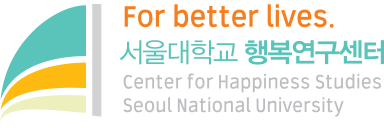Fredrickson(1998; 2001)은 긍정적 정서의 확장축적이론에서 긍정적인 정서가 주의와 사고의 폭을 확장시킴으로써 개인의 신체적, 지적, 사회적 자원 형성에 기여한다고 제안했다. 이에 본 연구는 긍정적 정서를 포함하는 행복이 창의력이라는 심리적 자원의 형성과 관련이 있는지 알아보기 위해서 두 개의 연구를 실시했다. 연구1에서는 총 262명의 대학생을 대상으로 장기적 행복(주관적 안녕감, 심리적 안녕감, 낙관주의, 스트레스)과 창의성(창의적 성향 및 일상적 창의성)의 관계를 검토했다. 연구2에서는 일시적인 행복 무드가 창의적 사고의 촉진에 기여하는지 검토했다. 그 결과 행복 성향이 높은 사람들은 창의적 성격을 갖고 있었고 독창성, 대안적 문제 해결 능력, 모험적 자유 추구와 같은 일상적 창의력이 높았다(연구1). 또한 실험을 통해 긍정적 정서(행복)가 유발된 집단은 부정적 정서(슬픔)가 유발된 집단보다 창의력 검사 점수(유창성, 독창성, 융통성)가 높았다. 이러한 결과는 행복이 창의적 성격, 행동, 사고와 관련이 있으며 창의력은 정서적 행복에 의해서 촉진될 수 있음을 시사한다.
Fredrickson(1998; 2001)`s broaden-and-build model posits that positive emotions broaden the scopes of attention and cognition, which in turn has an effect of building that individual`s physical, intellectual, and social resources. The present study tests this hypothesis by exploring the relationship between happiness and creativity. Study 1 examines whether the long-term happiness associates with creative personality. The results showed that chronically happy persons had more creative traits such as alternative problem-solving and adventurousness. Study 2 examines whether transient happy mood facilitates creative thinking. Positive or negative moods were induced by means of watching a few minutes of a comedy film or a sad movie. After films were shown subjects` creativity were measured by the Torrance Test of Creative Thinking. As expected, test scores on fluency, originality, and flexibility were higher for those in the positive mood condition than those in the negative mood condition. The results of two studies indicate that both long-term happiness and short-term happy mood have favorable effect on creativity.




![[연구참여자 모집/사례 지급] 자유연상 패턴과 심리적 속성 간의 관계 탐색](https://happyfinder.co.kr/wp-content/uploads/2024/05/워드프레스_연구참여자모집-360x180.png)









![[연구참여자 모집/사례 지급] 자유연상 패턴과 심리적 속성 간의 관계 탐색](https://happyfinder.co.kr/wp-content/uploads/2024/05/워드프레스_연구참여자모집-350x250.png)

